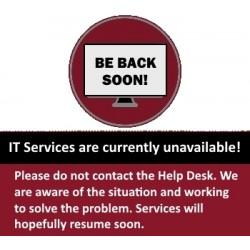IBM AS/400 Software
AS400 Programming
Programming languages available for the AS/400 include RPG, assembly language, C, C++, Pascal, Java, EGL, Perl, Smalltalk, COBOL, SQL, BASIC, PHP, PL/I, Python and REXX. Several CASE tools are available: CA Plex (formerly AllFusion Plex) , Synon, IBM Rational Business Developer Extension, Accelerator, LANSA, Uniface and GeneXus.
Integrated Language Environment
- CRTUSRPRF, DSPUSRPRF, CHGUSRPRF, DLTUSRPRF - create, display, change, and delete user profile
- CRTLIB, DSPLIB, CHGLIB, DLTLIB - Create, display, change and delete a library
- ADDLIBLE, RMVLIBLE, CHGLIBL - Add or remove library list entry or change library list
- CPYF, CRTF, DSPF, CHGF, DLTF - Copy, create, display, change, and delete file
- WRKACTJOB - Work with Active Jobs
- WRKSYSSTS - Work with System Status
- STRSST, STRPASTHR, STRSBS - Start System Service Tools, start pass through (remote login), start subsystem
- VRYCFG - Vary configuration, bring interfaces up or down
- PWRDWNSYS - Power Down System
- WRKSPLF - Work with spooled files
For traditional business programming languages such as RPG, COBOL, and C, the IBM System i provides an interface to the integrated database that allows these languages to treat database tables much like other platforms treat ISAM or VSAM files.
A Complete GUIDE for AS400 SOFTWARE for IBM i, iSeries & AS400 Systems
Midland encourages companies to download and compare AS400 software products, because it is important to know what you are buying before it is too late.
Please contact us to schedule a product demonstration, download AS400 software trials or to get prices for budgeting.
Security and Data Protection Solutions for 2024
Midland is a Platinum AS400 software and service provider for enterprises requiring turnkey solutions that reduce IT costs. Choosing the best of breed AS400 software is as important as choosing a reliable solution provider for implementation, training and support.
Industry leading IBM AS400 Software for IBM i, iSeries and AS400 System security, Multi-Factor Authentication (MFA), SIEM and SYSLOG forwarding, DB2 database encryption, Privileged Access Management (PAM), Password Self-Service (PSS), Ticket System integration like ServiceNow, Big Data Analytics Integration like Elastic, High Availability, Disaster Recovery, disparate platform and database replication and conversion tools for MySQL, PostgreSQL, MS SQL, DB2, Oracle, Informix, Sybase and Teradata.
AS400 Software for Security Access Controls
Securing exit point access to the AS400, DB2 database file and commands is critical where sensitive data rests.
The AS400 has many access paths in which must be audited and secured for various internal and external access vulnerabilities, threats and regulatory compliance requirements.
We provide a variety of AS400 security tools to secure AS400 exit point access using exit programs, DB2 Access and Changes, Command Controls, Port Security and Multi-Factor Authentication to ensure your security policies are being enforced, and industry leading reporting technologies to satisfy auditors and event log forwarding and integration tools for SIEM and ticketing systems.
Encryption, Masking, Scrambling and Tokenization
Any AS400 DB2 database file with sensitive data should be encrypted or have a similar data protection mechanism in place to mask or hide the original data. AS400 encryption using AES256 algorithm is the safest and most accepted security measure for protecting sensitive data at rest.
If variables or other circumstances exist where some DB2 fields cannot use encryption and a compensating control is approved for masking, scrambling or tokenization, we have all the tools necessary to protect your AS400 database in one suite of data protection tools. Our AS400 encryption software is validated by the National Institute of Standards and Technology (NIST) for IBM i AES database encryption. Encryption software includes a key management system and supports third party OASIS KMIP-compliant key management solutions.
Auditing, SIEM and Ticket System Integration Software
The AS400 system has many different event log sources that contain security, operational, performance and application event details that may be required to identify and isolate critical incidents, which may need to be incorporated into your corporate SIEM or Ticketing System.
Our AS400 software can automatically format and forward event logs in real-time from the follow log sources for integration with key infrastructure tools: QAUDJRN (system security journal), QHST (history log), DB2 Database (journals), Application Server logs (network access), Commands, SQL Statements, Message Queues (history, subsystems, traces), Open Source tools (like JSON, Node.js, Python, Ruby, Open Query, XCOM), Socket Exit Programs (secured ports), Privilege Access Management (profile swap, adopted authorities and other elevated authority events), MFA, Static data (user profile, system values, authorities, objects and IFS properties), Performance data (CPU, memory, disk, jobs) and Flat Files (HTTP, 3rd party applications)
Our AS400 software can integrate with any SIEM, SYSLOG Server, Ticketing System or other monitoring tools that support and ingest the following event log formats: JavaScript Object Notation (JSON), Log Event Extended Format (LEEF), Common Event Format (CEF), LogRhythm SIEM (LOGR), Generic Message Format (GENR), User Defined Format USRD), SYSLOG Message Format (RFC5424). Some third-party plug and play AS400 integrations include Splunk, QRadar, LogRhythm, DataDog, ArcSight, SolarWinds, AlienVault, Exabeam, ServiceNow Discovery and other tools used for security and operations monitoring, using certified APIs or supported formats that enables immediate integration to display dashboards, run reports and trigger alerts.
Database Replication, Conversion, Migration and ETL Projects
Our database replication tools can convert data to and from almost any database format on different OS and hardware platforms, and keep the disparate databases synchronized in real time and without locking source or target database files.
Our database replication software updates the remote target database like any other insert, update and delete operation. There are many use cases for replicating a production database to a different database type for long term analytics, reporting and ETL projects, or one-time conversion projects to migrate to a new database platform. No matter the business case, most will require uninterruptable access to the production and target database. Our database replication and conversion software allows applications and users to access and update both production and target database files without disruption.
Disaster Recovery and High Availability Software
The AS400’s exceptional reliability is not a scapegoat for companies to not take necessary precautions to implement a business continuity plan.
Ensuring mission critical applications remain available in the event of planned and unplanned downtime events will undoubtedly save a company money in the long run. Unplanned disasters are typically not the costliest or even common TCO measurement. Availability events that cause the most disruptions and affect business continuity on a AS400 system, are almost always related to planned downtime events. With the exception of IBM z Mainframe systems, IBM i Power and AS400 Systems have ranked number one in availability for 12 years in a row according to the ITIC. In fact, the most recent Global Server Hardware Server OS Reliability statistics results show the IBM Power system platform averaged only 1.54 minutes of unplanned downtime per server as a result flaws in IBM hardware.
About AS400 History
Logical PARtitioning
DB2
Common Client-Server Support
AS400 DATABASES
In 1986, System/38 announced support for Distributed Data Management Architecture (DDM). This enabled programs to create, manage, and access record-oriented files on remote System/36, System/38, and IBM mainframe systems running CICS. This support was extended into the AS/400 and its follow-ons. It was enhanced to support additional services that had been defined by DDM and to support AS/400-specific extensions, as allowed by DDM.










